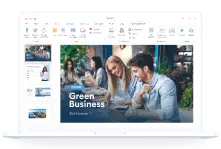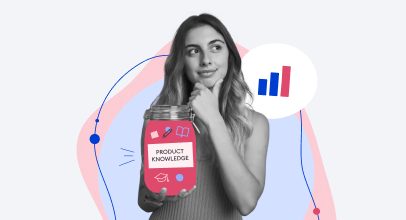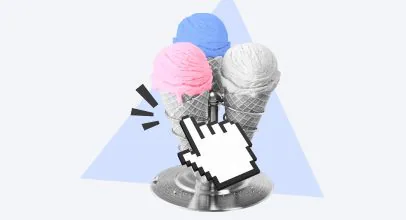Customer Education: A Can’t-Miss Way to Boost Customer Loyalty and Retention

When a customer purchases your product, you want them to be able to navigate it easily, use its full range of features, and extract the greatest possible value from it. But how do you facilitate a successful customer experience?
Of course, in a perfect world, your product is so self-explanatory and user friendly that every customer knows how to use it at first sight. In reality, customers’ goals, backgrounds, and knowledge vary greatly, and they may require some extra information in order to use your product successfully. This is where customer education comes into play.
Customer education is by no means a new notion, but the way that businesses train clients has become transformed in recent years. In this article, we’ll explore the best ways to educate your customers so you boost their chances of success with your product.
What Is Customer Education?
Customer education is giving your clients the knowledge, tools, and support they require to get the most out of your products and be a leader in their industry. This is usually achieved through a set of training programs or educational content created by the business. The idea is to guide customers through the entire process – from onboarding all the way to mastery of the product. Customer education is a win-win proposition for both sides: it allows buyers to perform their business or personal tasks effectively and helps you retain your customers and gain their loyalty.
Why Educating Customers Is the Key to Business Success
There’s no doubt that customer education has a positive impact on the overall success of a business. The real question is how. Here are the benefits you can realize:

1. Onboard customers more quickly
Almost every digital product involves product onboarding – a set of instructions and tips on how to use the product. Onboarding is a part of your education program. However, it also includes additional learning resources: help docs, guides, online courses, etc. A well-developed customer education program lets your business onboard more customers at a quicker pace and scale up faster.
2. Reduce the support team’s workload and reduce
Customer support teams often spend their days answering the same questions over and over. This is not only frustrating, but it’s also not an efficient or cost-effective use of your employees’ time, as it uses up valuable resources. Explore the frequently asked questions and include them in your customer education resources. This will reduce the workload of your support specialists and customer success managers, leaving them more available for higher-impact client interactions.
3. Build customer loyalty and become a lovemark brand
All successful businesses have one thing in common: they engender loyalty in their clients. When a business invests in customer education, it fosters a stronger connection with the brand and reduces the chances of clients switching to its competitor. By generating loyalty, your customers become advocates for the business, spreading the word and growing your user base.
4. Position your brand as a market leader
Investing in great customer education positions your brand as the market expert. By sharing high-quality, industry-specific knowledge, your business can show customers that you know the field better than any of your competitors. This inspires trust, helping your business to convert visitors to customers.
How to Launch a Customer Education Program: A Step-By-Step Guide
Consumer education is a big investment for a business. If you’re unsure of how to train consumers, use this guide as a starting point. Here’s a closer look:
Step #1: Set up goals
The first step toward implementing a customer education program is to define its goals. This will help you get a clear picture of what you’re trying to achieve and serve as a baseline that will be used to measure the results of your training program.

Step #2: Assess your current customer education program
Once you have defined your goals, it’s time to audit your current learning material if you already have some kind of customer training in place.
Learn the ins and outs of what your company does and what resources or materials are available by asking the right questions:
| Question | To do |
| What resources are already available? | Collect the customer guides, onboarding emails, and other important training components that already exist. |
| What role does each team play in customer education? | Customer education impacts several teams, so get to know the role that each team plays, how they currently train customers, and how they align the content. |
| What customer education tools do you need? | Take stock of what tools you’ll need to invest in to implement a customer education initiative. For example, to provide your clients with online training, you’ll need:
|
| What works and what doesn’t? | Research the current customer education program (if there is one) to identify educational gaps. For example, a large number of support tickets were opened after the product onboarding process was launched or customer usage dropped a few weeks afterwards may suggest that the onboarding experience is missing steps. Gather this information in a spreadsheet so you can refer back to it during the planning phase. |
Step #3: Decide on a training format
The next step is to decide what format you’ll use for your product training. Customer education training can be conducted in a number of ways. Here are 6 of the most common ones:

Now let’s look at the different ways of training in more detail so you can see which is the best choice for your particular needs.
| Type of training | Details | Benefits |
| Customer help documents | Customer help documents include:
These can be shared:
|
|
| Corporate blog | A company blog is a fantastic way to offer high-level training content related to:
This can be shared:
|
|
| Product onboarding emails | Curating a series of product onboarding emails can help drive customer development by sharing:
This can be shared:
|
|
| Training videos | There can be different kinds of video tutorials:
These can be shared:
|
|
| Webinars and live demos | Customer success teams play a significant role in training customers. They can carry out several types of training, including:
These can be recorded and shared:
|
|
| Online courses | An online course is self-paced virtual training. The key characteristics of online courses include:
Online courses can be:
|
|
To drive customer development effectively, a blended learning approach works best. By combining online courses with live training sessions led by customer success teams, corporate blog posts, and customer help documents, you give your clients the best chance of success.
Step #4: Map out your training program
You’ve defined the business outcomes, audited the current customer education initiatives, and chosen your tools. So, what’s next? It’s time to map out the training program. At this stage, it’s important to take stock and use the data you gathered during step 2 to understand what objectives you can help consumers achieve.
When outlining your training program, factor in the following considerations:
Define the learning goals and objectives
Delineate what the key learning outcomes for customers are and how your training program can get them there. Come up with a maximum of three learning goals that you want your training program to achieve and three to five objectives per goal.
Here’s an example:

Want to know more? Read this article on how to set learning goals and objectives for online courses.
Identify subject matter experts (SMEs) in the company to lead the way
Their vast experience makes SMEs a vital cog in the creation process. Pick their brains for ideas on case studies, interactive activities, or other necessary training material.
Capture content ideas
Put your heads together to come up with a content mix. Outline all the types of content you want to include to make your training dynamic. For example, use videos, visuals, case studies, quizzes, and simulations to build a didactic learning experience.
Define the length of the content
Define the length of your training lessons and keep this consistent so customers know how much time they need to dedicate to each one. Customers are short on time, so bite-sized lessons work best.
Decide on a delivery method
Think about when and where your customers will take the training. Most consumers will do this on the go, so it needs to be available anywhere, anytime. For maximum engagement, your learning content should work on all types of devices.
Research how other companies train customers
When outlining your training program, research how other companies are successfully educating customers and use this as a source of inspiration. Here are a couple of case studies you might want to check out right away:

IMT Matcher
IMT Matcher(TM) provides IVF management technologies and quality management systems to fertility centers, donor banks, and other Assisted Reproductive Technology (ART) centers.
Learn how the company is training its rapidly growing international customer base and was able to reduce training costs by 25%.

BEST SAP
BEST is an official SAP partner focused on developing, implementing, and supporting SAP add-on products.
Learn how the company built a new approach to training customers during the COVID-19 outbreak and reduced user training time from 3 days to 5-6 hours.
Step #5: Create learning content
Once your training program is defined, it’s time to create the learning content. This is where a course authoring tool comes into play. If you want to provide your customers with versatile interactive content that engages them, opt for a well-rounded tool like iSpring Suite Max.

A slide from the course created with iSpring
With iSpring, you can:
- Build online courses on any topics you like in a matter of minutes right in PowerPoint
- Use ready-made slide templates, and images of characters and locations to make professional-looking courses
- Engage customers with interactive activities such as role-plays
- Create quizzes and assessments to test customers’ knowledge
- Educate and engage consumers with video
- Create multi-device learning content
- Collaborate on courses together with your team in a single online workspace
- Update your learning content with ease whenever you need to.
Step #6: Deliver learning content
Once you have created your educational content, the next step is to share it with your end users and/or clients. Of course, you’ll publish general educational materials on your website, blog, and YouTube channel, but it is difficult to evaluate their effectiveness – if it only comes through feedback from customers. And what if you want to clearly understand whether your customer education program brings good results and helps your clients grow? For this, you will need a learning management system (LMS).
When choosing the right learning platform for your customer training, consider the following factors:
Is it user friendly?
Your LMS is the tool your customers will come into the most contact with, so opt for one that is intuitive and easy to use. Search for an LMS that users can navigate from day one.
Can it track metrics?
You’ll need a way to measure the success of your customer education initiative and share the results with your leadership team. It’s best to invest in an LMS with strong analytical capabilities so you can demonstrate the value of the education program in terms of customer satisfaction, engagement, and performance. It also offers invaluable insights into how the program can be improved.
Is it scalable?
Your customer education tools need to grow with the business. That’s why choosing a scalable LMS is a must. These are the main features of a scalable LMS:

If you still don’t have a learning platform, you can try iSpring Learn LMS. It is powerful in terms of functionality but has an intuitive design, so it will be perfect for those trainers and trainees who have never used an LMS before.

iSpring Learn interface
With iSpring Learn, you can:
- Segment audiences to offer personalized customer training learning paths
- Create courses with the integrated iSpring Suite authoring toolkit and the built-in course editor
- Automate training management tasks like managing deadlines and sending invites and reminders
- Create comprehensive, custom reports to measure the success of your customer education
- Customize the platform with your business branding for a seamless user experience
- Utilize the mobile app to deliver on-the-go learning
- Amp up your customer training with gamification tools like badges, certificates, and points
- Scale your training in line with the business, building on your program over time
Step #7: Use data to evaluate your results
Rolling out your customer training is only the beginning. Once it’s live, you’ll need to gauge its success. There are different ways to do this: сheck LMS reports, send surveys, use star rankings, and create an open channel for feedback. The more you know, the more you can improve your training program. Listen to the customer feedback and react.
Metrics to Measure Customer Training Results
If you conduct training via the LMS, you have the opportunity to track the results and learners’ behaviors. All LMSs have a variety of reports. Let’s take a look at iSpring Learn as an example.
1. Learner progress
Learner progress reports give a full overview of how customer training is working. They give insight into how engaged customers are. Low results could indicate that customers aren’t aware of the training, don’t find it relevant, or are having access issues.

This report details how many courses have been completed and how each customer performs.
2. Learner results
This report gives a detailed picture of how an individual customer is performing. This information is vital if a particular customer is having issues, reaching out to your support team a lot, or has submitted a complaint.

You can see the courses assigned to the consumer, the time spent with each training, and the number of attempts.
3. Course details
Course detail reports allow you to analyze how customers are progressing with a specific training course. Keep an eye out for consistently low test scores, as this could indicate that the quiz is too difficult or needs clarification. On the flip side, if all customers are getting the maximum score on quizzes, you might want to make the lesson more challenging.

You can check what modules have been completed, the time spent on each one, when a customer completed the course, and how they performed on assessments.
4. Progress achievements
This report works perfectly for exams and assessments. If your customer training program offers certification upon completion, this data allows you to see who has been certified and when.

This report indicates customers’ progress on online quizzes and assessments.
Want to know more? This handy article on LMS reporting will let you know how to utilize the analytics.
Customer Education Best Practices
Creating customer education eLearning courses in-house is a surefire way to effectively train your customers, but it requires some research and skills. Here are some tried-and-true best practices to make your consumer education program a hit:
Stick to bite-sized learning
Microlearning is the most effective way to educate consumers. Clients are on-the-go learners who want their training at the point of need. Microlearning, when done well, boosts retention and engagement. To utilize microlearning, divide a one-hour online lesson into smaller chunks, or microlessons.
Learners respond best when these microlessons include quizzes and interactive content that obliges them to recall the information they have just learned. Adding time limits to these lessons helps build momentum and add a gamified element.
Use a variety of learning styles
Everyone learns differently. To give your customers the best chance of understanding and retaining the educational content, tap into different learning styles. We’ve put together an overview of five common learning styles to implement in your training program, including clear-cut examples of how to incorporate them into your customer education strategy:

Keep your style consistent
Add variety to your customer training through different types of interactions, storytelling, and a creative use of multimedia, but keep your look and feel consistent. Before making your first lesson, invest some time building a clear style guide to follow.
As a general rule, the following elements should remain consistent:
- Tone of voice: Whether it’s conversational or professional, keep the tone of voice consistent throughout your training.
- Look and feel: Color palettes, fonts, call-to-action buttons, page layout, etc., should be standardized to facilitate seamless navigation for learners.
- Image style: Keep the style of images consistent throughout your training. For example, try not to mix cartoon images with photos.
- Negative space: Negative space is the blank space on each slide of your training. Don’t overcrowd your slides, and keep a consistent amount of blank space throughout.
Personalize your content
Excellent consumer education engages learners, helping them to retain knowledge. A primary driver of customer engagement is creating training that feels relevant and tailored to the individual. You can achieve this with some nice touches, like adding the learner’s name to the welcome page, customizing the end-of-course screen, and segmenting learners into groups in your LMS.
Final Thoughts
Top-notch customer education sets a business apart from its competitors. It builds trust, reduces support team workloads, boosts referrals, and generates income. To roll out successful consumer training, you’ll need a clear plan and the right tools for the job.
With the iSpring package, you can create, deliver, and manage all of your customer training under one roof and put your customers on a fast track to success. To see iSpring tools in action, start a free 30-day iSpring Learn LMS free trial and a free 14-day iSpring Suite free trial.









